The Asteraceae, also known as the Compositae family, stands as a remarkably vast and evolutionarily advanced group in the plant kingdom. While not a major source of agricultural crops, this family boasts an impressive diversity of approximately 20,000 species, securing its place as the second-largest family of flowering plants worldwide. Asteraceae members exhibit a wide array of growth forms, though they are predominantly herbaceous. Their leaves are characteristically alternate, frequently forming basal rosettes, and lack stipules. A defining feature of the Asteraceae family is its unique inflorescence: the capitulum, or head. This structure deceptively resembles a single flower but is actually a composite of numerous small flowers attached to a common receptacle. These flowers can be bisexual or unisexual, radially (actinomorphic) or bilaterally (zygomorphic) symmetrical, and typically have five petals fused together (sympetalous). The calyx is either absent or significantly reduced, often modified into a pappus of bristles or scales. Asteraceae flowers are categorized into two main types: ray (ligulate) flowers, which often resemble petals, and disk (tubular) flowers, which are located in the center. The male reproductive parts, the androecium, consist of five stamens fused by their anthers, creating a tube around the style. The ovary is positioned below the other floral parts (inferior), and the resulting fruit is an achene.
The aster family enjoys considerable popularity among gardeners. Familiar garden plants such as asters, chrysanthemums, various types of daisies, and sunflowers belong to this family and are widely cultivated for their ornamental value. Marigolds are particularly favored by organic gardeners because their roots release substances toxic to certain root nematodes. When planted as a cover crop, marigolds can effectively help in nematode control. Additionally, the scent of marigold leaves is known to repel whiteflies and other insects, making them a useful companion plant in gardens.
Beyond their ornamental uses, some wild Asteraceae species have traditional applications as food and medicine. Dandelion’s young leaves are a common addition to salads, and its flowers can be fermented to produce dandelion wine. Chicory roots have historically served as a coffee substitute, especially during times of scarcity like World War II when it was cultivated as a coffee extender. European yarrow (Achillea millefolium) has a long history of medicinal use, with legends suggesting it was used by Achilles to treat soldiers’ wounds, hence the genus name Achillea. Sunflowers (Helianthus) held significant importance for Native Americans, who used their seeds to make flour-like powder for cooking. Today, sunflowers are commercially cultivated, primarily for the oil extracted from their seeds, and the seeds themselves are a popular snack.
 Helianthus honeybee
Helianthus honeybee
A honeybee pollinates a sunflower, demonstrating the composite nature of the inflorescence characteristic of the Asteraceae family.
Understanding the Capitulum: The Composite Flower Head
A defining characteristic of the Asteraceae family is the capitulum, or flower head. This structure is a dense cluster of small flowers (florets) that together mimic the appearance of a single, larger flower. This composite nature is the reason for the alternative family name, Compositae. Within a capitulum, two primary types of flowers can be found: ray flowers and disk flowers.
In capitula that feature both types, ray flowers are typically located around the periphery. They often resemble the petals of a typical flower, serving primarily to attract pollinators with their petal-like appearance. Disk flowers, on the other hand, occupy the central part of the capitulum and are structurally more similar to the conventional sexual parts of a flower, containing both stamens and carpels.
 asteraceae capitulum
asteraceae capitulum
A diagram illustrating the Asteraceae capitulum, highlighting its resemblance to a single flower despite being composed of many individual florets.
This aggregation of numerous small flowers into a compact head is an evolutionary adaptation that enhances pollination efficiency. The capitulum facilitates a kind of “assembly line” pollination process, making pollen transfer highly effective.
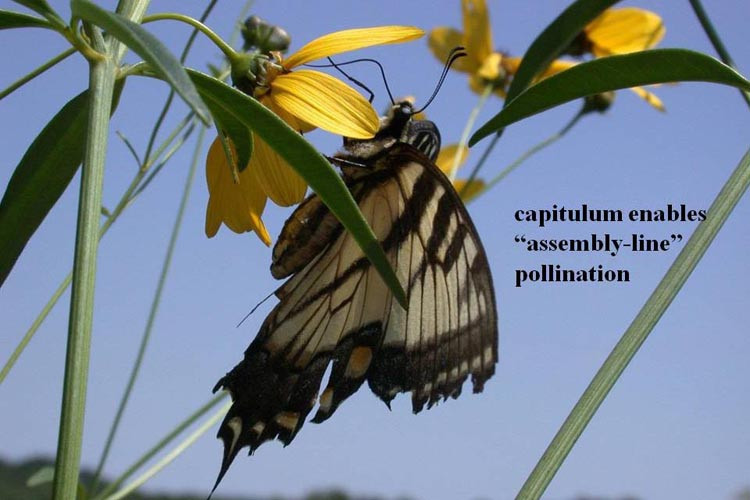 capitulum pollination
capitulum pollination
A visual representation of capitulum pollination, emphasizing the efficiency of pollen transfer in Asteraceae flower heads.
Dissecting the Sunflower Capitulum: A Closer Look
The Jerusalem artichoke (Helianthus tuberosus), a type of sunflower, offers a clear example of a typical composite flower head. Soldier beetles, often seen on these plants, may visit for pollen, although they are not always effective pollinators.
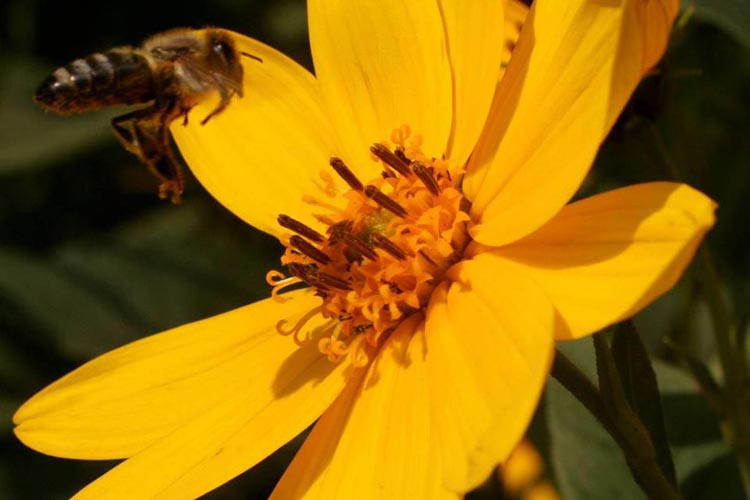 Helianthus tuberosus
Helianthus tuberosus
Jerusalem artichoke exemplifies the “composite” structure of Asteraceae flowers, showcasing the dense arrangement of florets.
When a sunflower capitulum is carefully dissected, its component flowers become visible.
 Helianthus flowers
Helianthus flowers
A detailed dissection of Helianthus flowers, separating ray and disk florets to illustrate their distinct structures.
Ray flowers, typically the larger flowers on the periphery, often lack functional sexual parts in the Helianthus genus and primarily serve to attract pollinators. Disk flowers, located centrally, are typically bisexual (hermaphroditic). Each disk flower comprises an inferior ovary, a modified calyx called a pappus (here consisting of scales), a sympetalous and actinomorphic corolla with five fused petals, and five stamens fused by their anthers into a tube. The style extends through this tube, culminating in a pair of style branches.
 Helianthus disk
Helianthus disk
Detailed illustration of a disk flower structure in Helianthus, highlighting the fused stamens and other key components.
The stamens in disk flowers form a tube through the fusion of their anthers. Pollen is released from the inside of this tube onto the backs of the style branches as they grow through it. Due to this mechanism and the common self-incompatibility in Asteraceae, self-pollination is generally avoided. Instead, pollen is presented on the styles to visiting insects, facilitating cross-pollination.
Pollen Presentation in Wild Lettuce: An Alternative Strategy
Wild lettuce (Lactuca canadensis) represents a variation in capitulum structure. Its capitulum contains only strap-shaped ligulate “ray” type flowers and lacks radially symmetric disk flowers. In Lactuca, pollen grains are visibly sprinkled on the backs of the style branches.
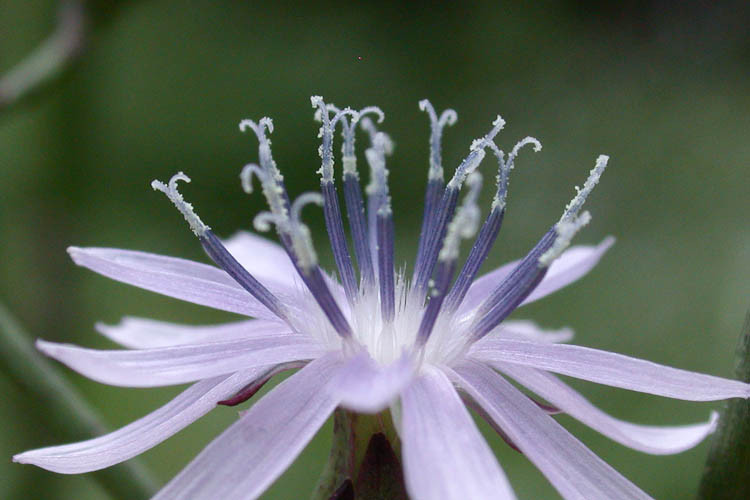 Lactuca canadensis pollen
Lactuca canadensis pollen
Wild lettuce flowers demonstrating pollen presentation on their styles, a characteristic feature in certain Asteraceae species.
Fruit and Seed Dispersal: The Role of Pappus
The characteristic fruit type of the Asteraceae family is an achene. Seed dispersal in Asteraceae is often aided by the pappus, which is derived from modified sepals. The pappus exhibits considerable variation across the family. It can be composed of scales (as seen in Helianthus), bristles, or may be absent altogether. A common form of pappus is tufts of hair-like bristles that function as a parachute or hang glider, facilitating wind dispersal of the achenes.
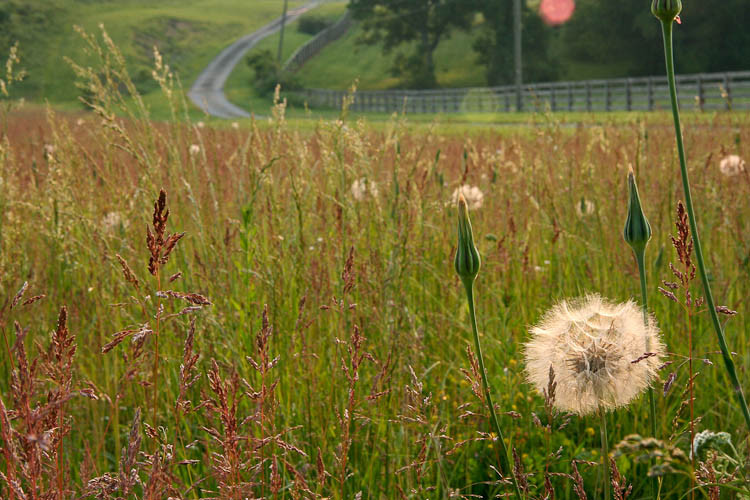 Tragopogon pratensis meadow
Tragopogon pratensis meadow
Goatsbeard fruits with their plume-like pappus, illustrating a wind-dispersal mechanism common in the Asteraceae family.
Evolutionary Advancement of Asteraceae
The Asteraceae family is considered highly evolved. The presence of strongly zygomorphic strap-shaped ligulate/ray flowers signifies a departure from the primitive floral traits, marking the family as evolutionarily advanced.
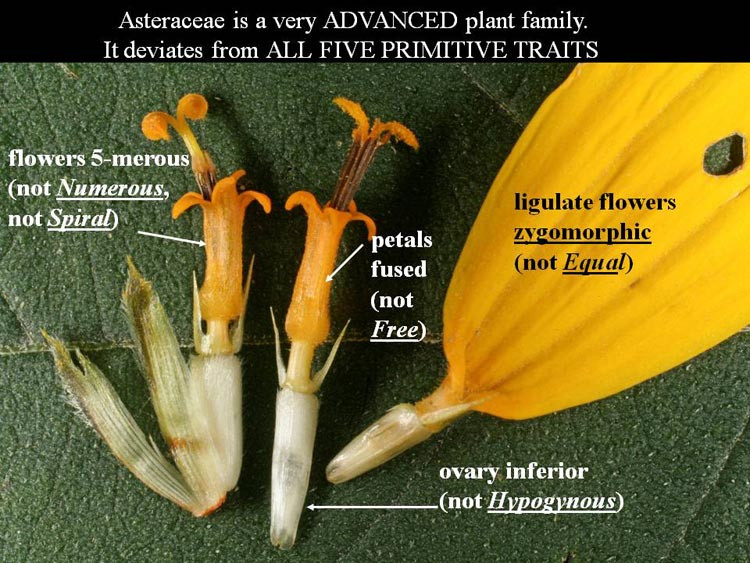 F E N S H !
F E N S H !
Three Capitulum Types: Radiate, Discoid, and Ligulate
The combination of ray and disk flowers leads to three primary types of capitula within the Asteraceae family: radiate, discoid, and ligulate.
Radiate Capitulum
A radiate capitulum is characterized by the presence of both central disk flowers and peripheral ray flowers. Nodding beggar-ticks (Bidens cernua) is an example of a plant with a radiate capitulum.
 Bidens cernua
Bidens cernua
Nodding beggar-ticks displaying a radiate capitulum, which includes both ray and disk flowers.
Discoid Capitulum
A discoid capitulum contains only radially symmetrical disk flowers. Pasture thistle (Cirsium discolor) is an example of a species with this type of capitulum.
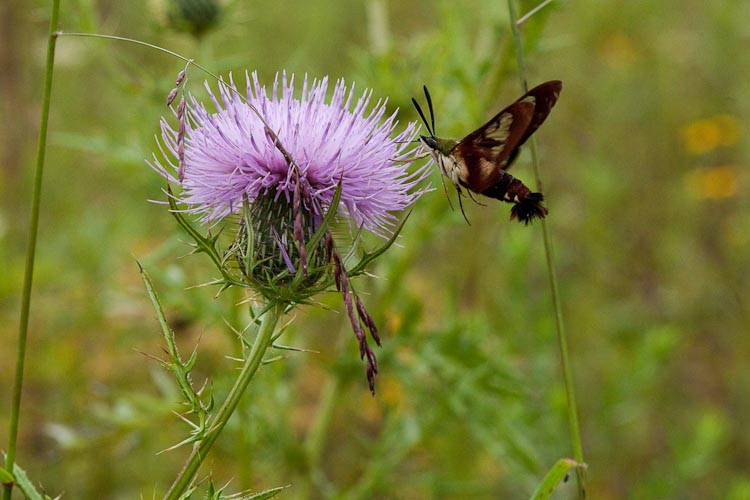 Cirsium discolor
Cirsium discolor
Pasture thistle exhibiting a discoid capitulum, characterized by the exclusive presence of disk flowers.
Ligulate Capitulum
A ligulate capitulum is composed entirely of strap-shaped, strongly zygomorphic flowers. In contrast to the often sterile ray flowers in radiate capitula, all flowers in a ligulate capitulum are fertile and bisexual. Plants with ligulate capitula, such as chicory (Cichorium intybus), belong to a distinct subfamily of Asteraceae and often contain milky sap.
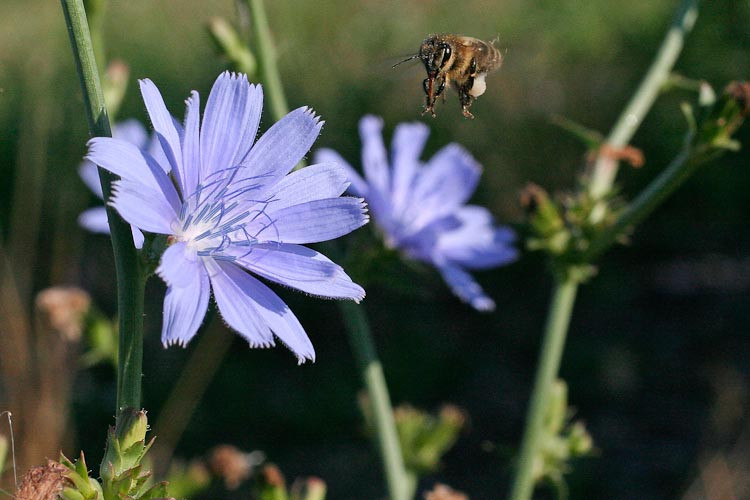 Cichorium intybus
Cichorium intybus
Chicory showcasing a ligulate capitulum, where all florets are of the ray type.
Representative Ohio Asteraceae: Radiate Capitulum Type
Ohio is home to a diverse array of Asteraceae species. Radiate capitulum types are well-represented, including stiff goldenrod (Solidago rigida), a characteristic prairie wildflower.
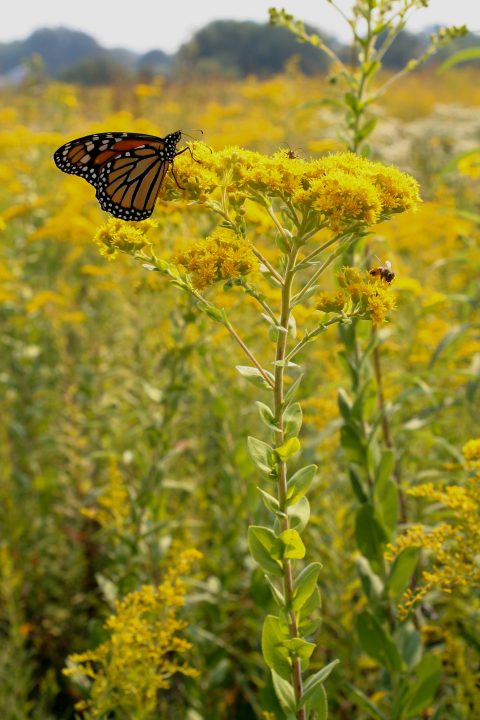
Stiff goldenrod, a prairie wildflower from Ohio, exemplifies the radiate capitulum type.
The genus Senecio in Ohio includes several yellow-flowered, mostly radiate herbs. Butterweed (Senecio glabellus), originally from the southeastern U.S., has become a common weed in Ohio farm fields during spring.
 Senecio glabellus
Senecio glabellus
Butterweed, a common spring weed in Ohio farmlands, demonstrates a radiate capitulum.
A closer view of butterweed reveals the column of fused stamens emerging from some disk flowers.
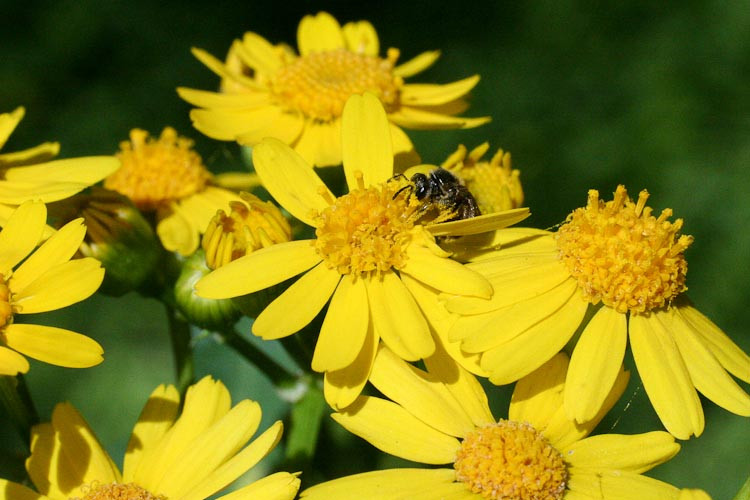 Senecio glabellus bee
Senecio glabellus bee
A bee visiting butterweed, highlighting the radiate capitulum structure.
Golden ragwort (Senecio aureus), a native Senecio species, is found in prairies and moist woods, flowering in April-May.
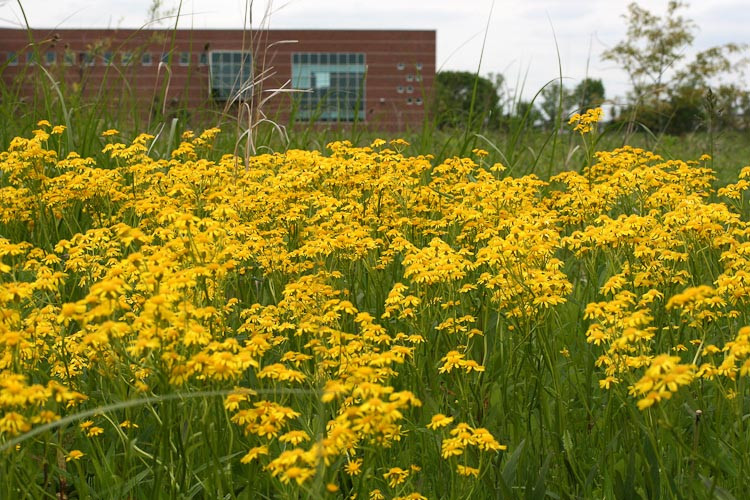 Senecio aureus
Senecio aureus
Golden ragwort, a native Ohio prairie wildflower, featuring a radiate capitulum.
Daisy fleabane (Erigeron philadelphicus) is a native, yet somewhat weedy, plant with narrow white rays and a yellow disk.
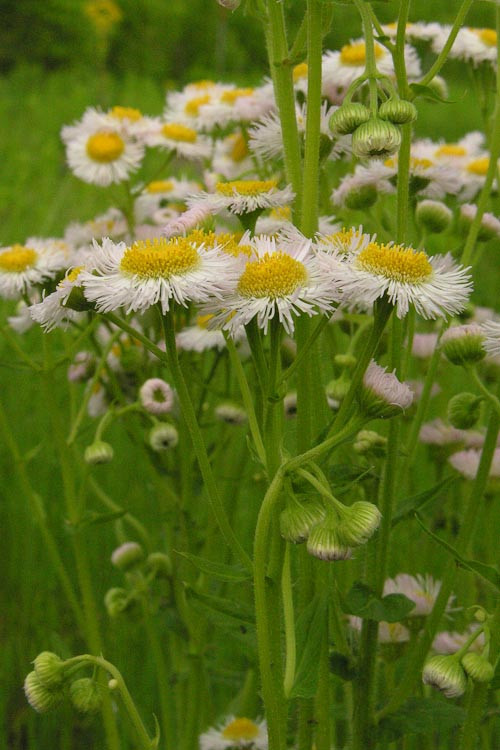 Erigeron philadelphicus
Erigeron philadelphicus
Daisy fleabane, a weedy spring plant in Ohio, showcasing its radiate capitulum.
Ox-eye daisy (Chrysanthemum leucanthemum) has fewer, wider rays and is common along roadsides and meadows. The name “daisy” originates from “day’s eye,” referring to the daytime opening of similar flowers.
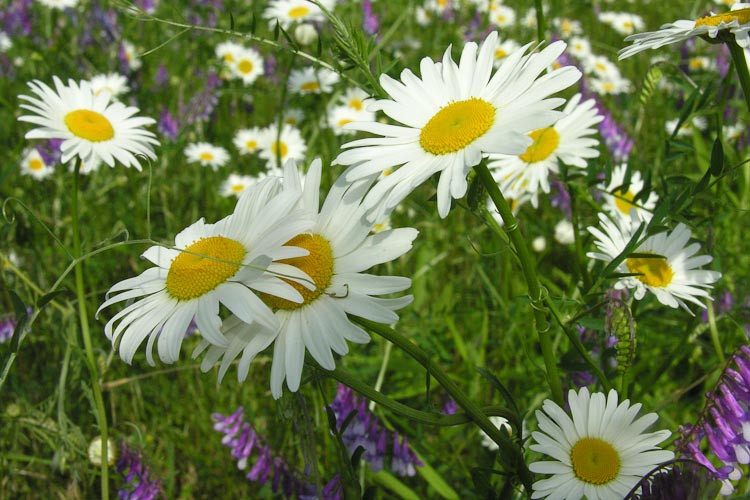 Chrysanthemum leucanthemum
Chrysanthemum leucanthemum
Ox-eye daisy, a roadside weed in Ohio, with its characteristic radiate capitulum.
Yarrow (Achillea millefolium), known for its historical medicinal uses and finely divided leaves, is a weedy plant with small white radiate capitula.
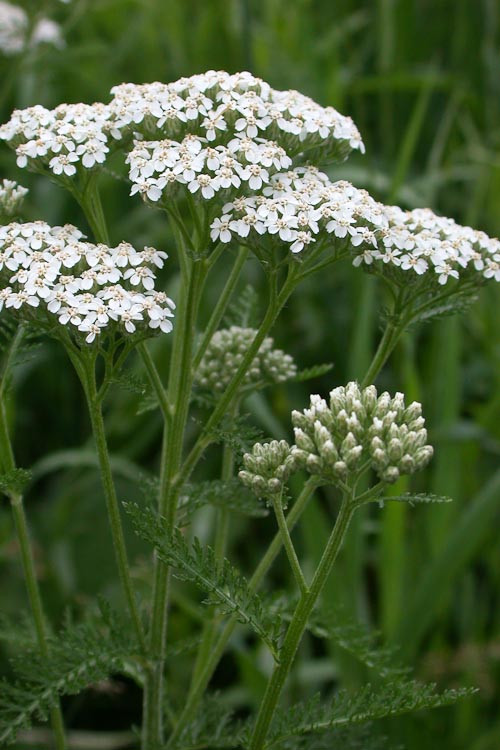 Achillea millefolium
Achillea millefolium
Yarrow, a biennial herb with small white flower heads, representing the radiate capitulum type.
Yarrow capitula are small and radiate.
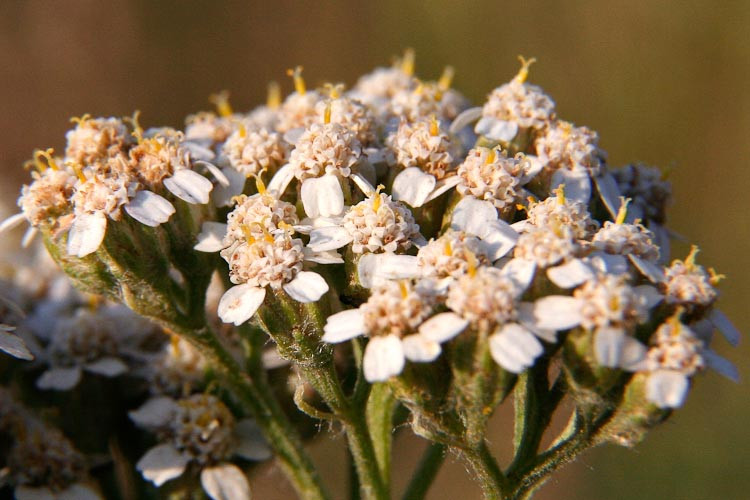 Achillea millefolium flowers
Achillea millefolium flowers
Close-up of yarrow capitula, emphasizing their small and radiate structure.
Yarrow leaves are finely divided, a distinctive feature of this plant.
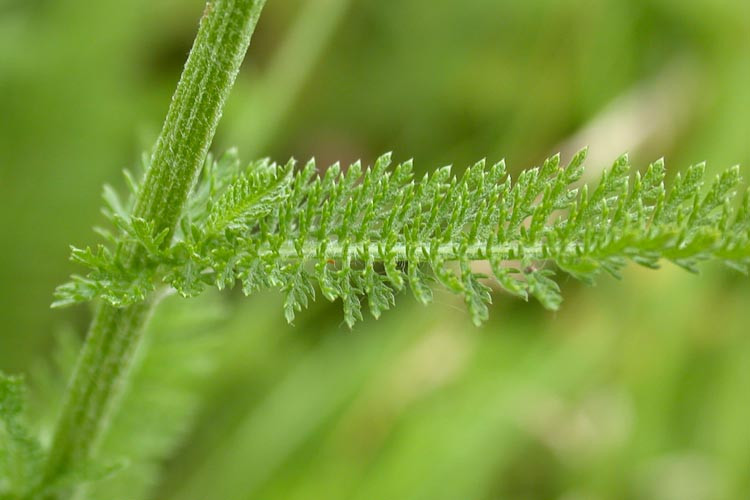 Achillea millefolium leaf
Achillea millefolium leaf
Yarrow leaves, finely divided, a key identification characteristic.
Representative Ohio Asteraceae: Discoid Capitulum Type
Some Asteraceae, termed “rayless composites,” have discoid capitula. Common groundsel (Senecio vulgaris) is a self-pollinating annual with discoid capitula.
 REPRESENTATIVE OHIO ASTERACEAE I. RADIATE CAPITULUM TYPE
REPRESENTATIVE OHIO ASTERACEAE I. RADIATE CAPITULUM TYPE
Common groundsel, a rayless composite in Ohio, exhibiting a discoid capitulum.
Thistles, such as Canada thistle (Cirsium arvense), are examples of genera composed entirely of discoid species. Canada thistle, despite its name, is a European weed known for its wind-dispersed fruits with a fluffy pappus.
SLIDE the IMAGE to see THISTLE IN FRUIT
Canada thistle, a weedy species in Ohio prairies and meadows, representing the discoid capitulum type.
Canada thistle in fruit, showcasing the fluffy pappus that aids in wind dispersal.
Representative Ohio Asteraceae: Ligulate Capitulum Type
Asteraceae with ligulate capitula form a distinct group. Unlike ray flowers in radiate heads, ligulate flowers are fertile and bisexual. Sow-thistle (Sonchus arvensis) is an example of a ligulate capitulum type.
Here’s a cross-section of the radiate capitulum of sow-thistle, Sonchus arvensis. Note that all the flowers are alike and bisexual. Note: the tubular flowers in the center of the capitulum are unopened flower buds, not disk flowers.
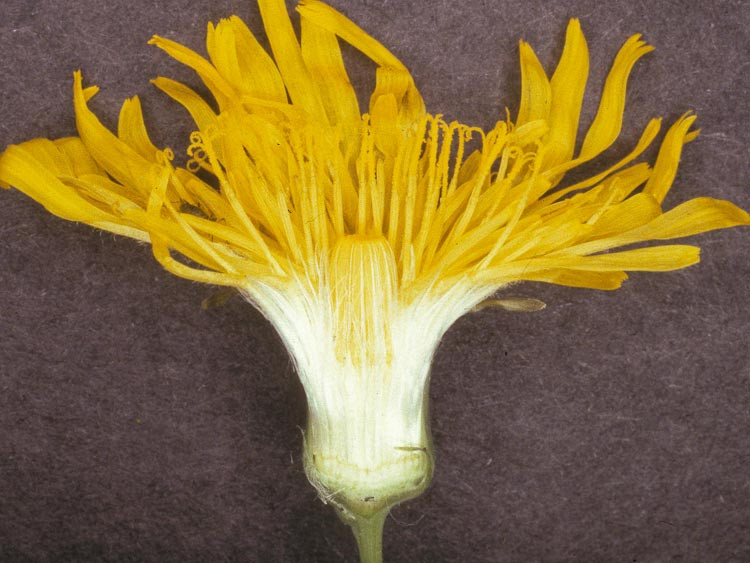 Sonchus arvensis capitulum
Sonchus arvensis capitulum
Sow-thistle displaying a ligulate capitulum, composed entirely of ray-type flowers.
Sow-thistle flowers, in various developmental stages, show a pappus of hair-like bristles for wind dispersal.
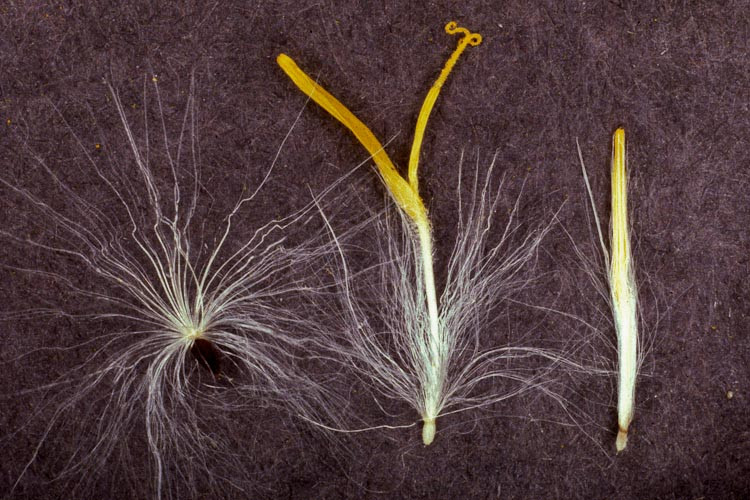 Sonchus flowers
Sonchus flowers
Sow-thistle fruit and flowers, illustrating the achene with pappus, flower, and bud.
Sow-thistle (Sonchus oleraceus) plants have ligulate capitula reminiscent of dandelions.
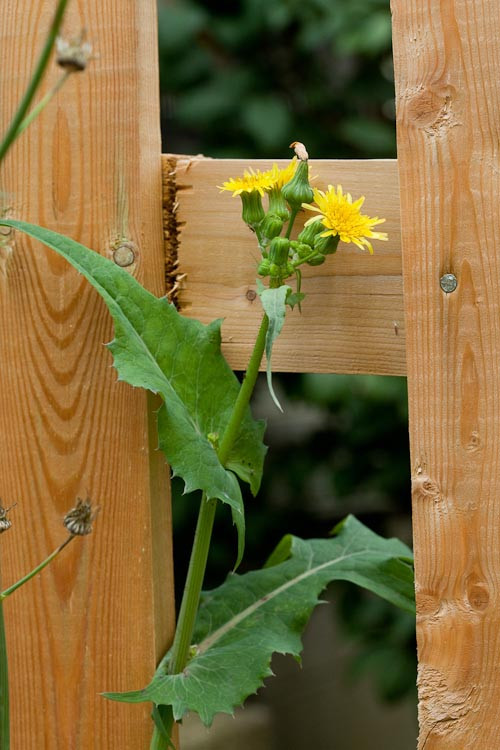 Sonchus oleraceus
Sonchus oleraceus
Sow-thistle plant with clasping, sharp-toothed leaves and ligulate capitula.
The dandelion (Taraxacum officinale) is perhaps the most familiar plant with a ligulate capitulum. Its name, “dandelion,” comes from the French “dent-de-lion,” referring to its toothed leaves.
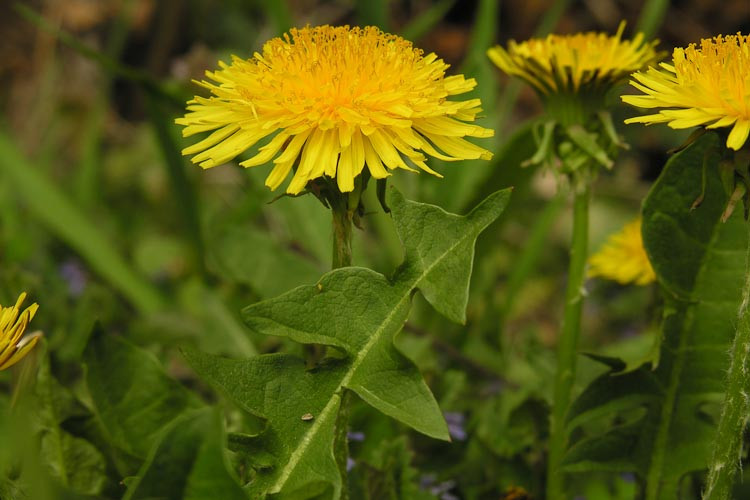 Taraxacum officinale
Taraxacum officinale
Dandelion, a common weed with a ligulate capitulum, showcasing its distinctive flower head.
The dandelion capitulum is subtended by involucral bracts (phyllaries), some reflexed and others upright.
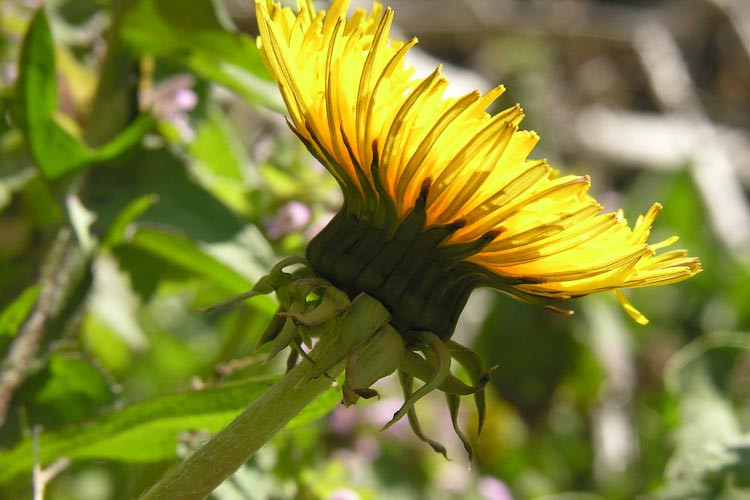 Taraxacum phyllaries
Taraxacum phyllaries
Dandelion phyllaries, prominent and in two sets, surrounding the ligulate capitulum.
In fruit, dandelion achenes are dispersed by wind, aided by their plumose pappus.
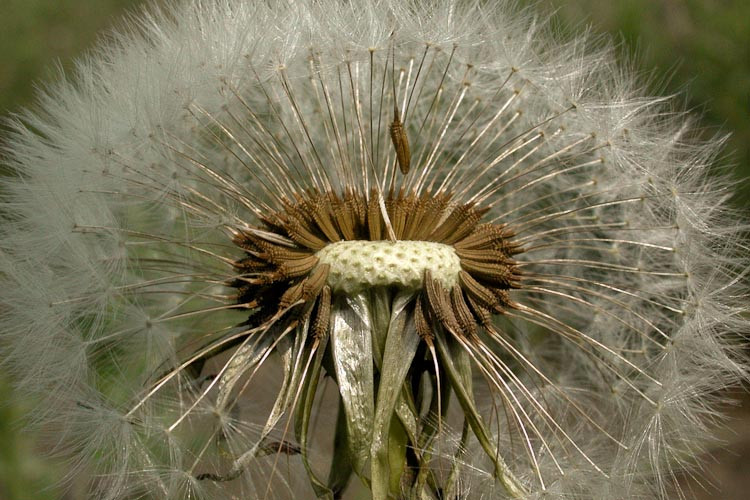 Taraxacum officinale fruiting
Taraxacum officinale fruiting
Dandelion fruits, achenes topped with a plumose pappus, ready for wind dispersal.
Notable Asteraceae: Asters to Know
Prairie-dock (Silphium terebinthinaceum) is a tall plant with large basal leaves, a signature wildflower of tallgrass prairies.
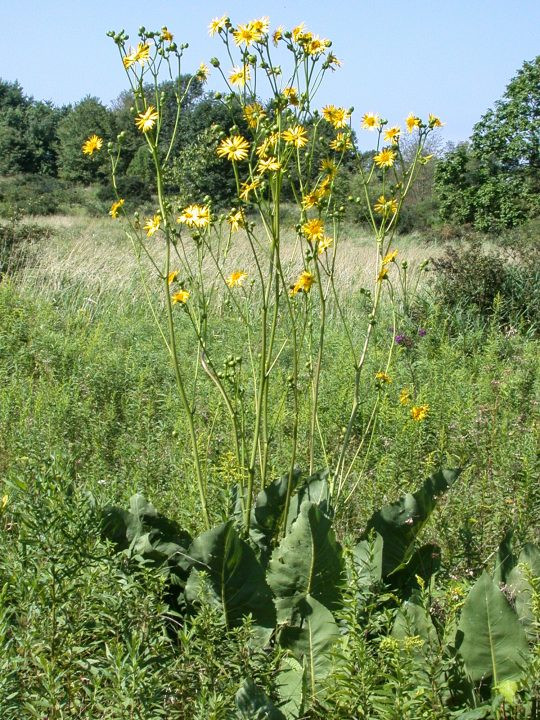
Prairie-dock, a tallgrass prairie signature wildflower with large basal leaves.
Sawtooth sunflower (Helianthus grosseserratus) is another tall composite found in prairies, roadsides, and meadows, flowering in late summer.
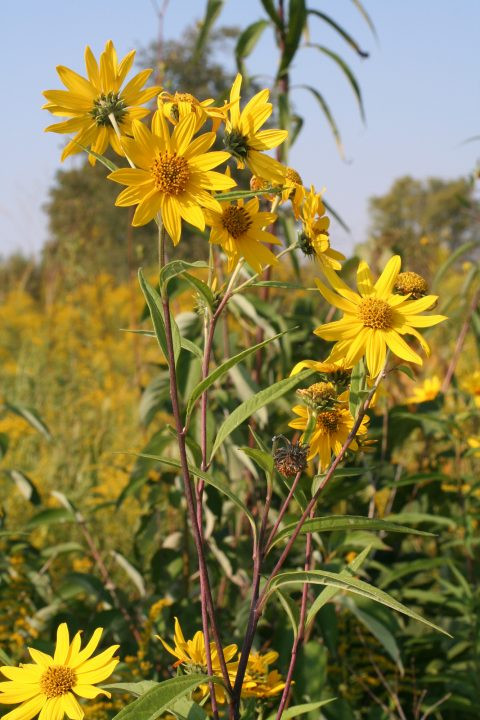
Sawtooth sunflower, a tall late-summer wildflower with narrow toothed leaves.
Canada thistle (Cirsium arvense), an invasive Asteraceae member, is common in disturbed areas and prairies, posing a challenge in prairie restoration.
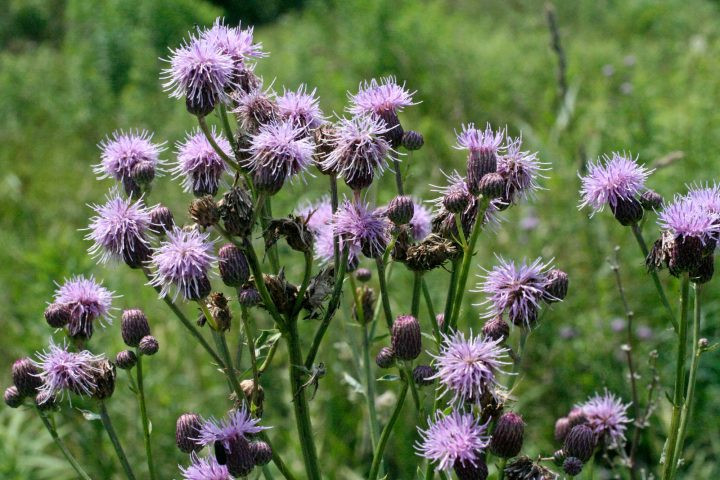
Canada thistle, an invasive weed in North America, posing a threat to prairie ecosystems.
